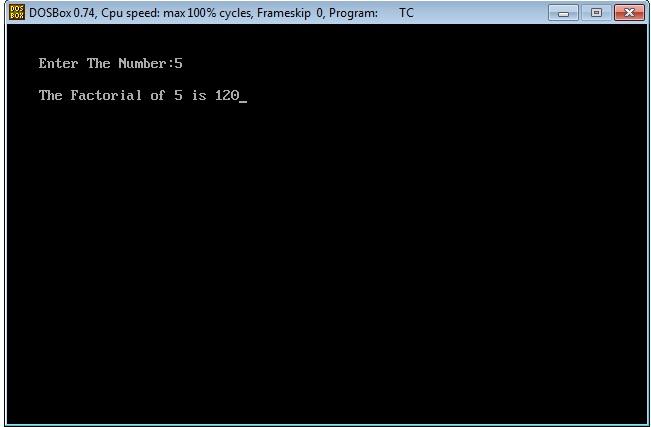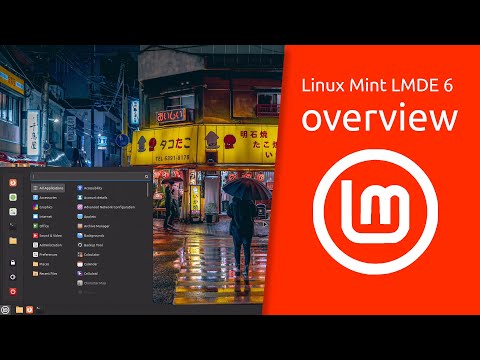
The world’s most powerful supercomputers use Linux. A supercomputer is a device whose computing capabilities are by far higher than those of common computers. The most powerful supercomputer nowadays exceeds 1,190 Petaflops (PFlops). This is a performance no personal device can achieve.
Besides, it is worth mentioning that Linux has dominated the list of the world’s 500 most powerful supercomputers since 2009.
Linux: more than 20 years in the supercomputing world
The TOP500 list has been updated twice a year (in June and November) since 1993. Linux appeared for the first time in this list of the world’s most powerful supercomputers in June 1998. The first supercomputer using Linux to be included in the list was the Avalon Cluster from the United States, in the 314th position. The Avalon Cluster supercomputer had 140 Alpha EV56 processors.
In the nineties, commercial versions of Unix such as IRIX, UNICOS, AIX or Solaris dominated the TOP500 list. Besides, at that point, Windows and MacOS were already focused on end user devices. But, from 1998 onwards, the evolution of Linux was outstanding in the supercomputing field. Throughout the years, Linux’s growth has been unstoppable; specially between November 2002 and November 2009. During that 7-year period, Linux went from being used in 71 supercomputers to being used in 448 supercomputers.
Currently, Linux is the clear leader in supercomputing. For Linux to lose the leadership, a big hardware revolution should take place. However, as time goes by, we will see if other alternatives emerge to challenge Linux’s leadership.
Why is Linux perfect for supercomputers?
There are many reasons why most supercomputers have chosen Linux. Let’s see some of the main reasons why Linux is the leader in supercomputing:
- Open operating system. Since it is an open source system, it is 100% customizable. This feature enables the free modification of any part of the code. It is useful both for improving performance and solving any security problem.
- Lower consumption of resources. As it is customizable, performance can be boosted by specifying that only vital applications are executed. This cannot be done with other operating systems, since they do not usually allow specific configurations.
- Modular structure. This is one of the most important features of Linux. As it is completely open, new modules can be added without affecting other parts within the operating system. Besides, resource optimization is much easier.
- Adapted to all kinds of workloads. Its ability to adapt to all kinds of workloads is a very important feature as well. This makes measuring the supercomputer efficiency, consumption and performance easier.
- Costs. As it is completely free, there is no need to pay for a license to use it. So, the necessary investment is the time required to modify the OS for each project.
The world’s 10 most powerful supercomputers
These are the ten most powerful supercomputers in the world, according to the TOP500 list (June 2023 update).
| Supercomputer | Country | OS | Rmax | Rpeak |
| #1 Frontier | United States | HPE Cray OS | 1,194 PFlops | 1,679.82 PFlops |
| #2 Supercomputer Fugaku | Japan | Red Hat Enterprise Linux (RHEL) | 442.01 PFlops | 537.21 PFlops |
| #3 LUMI | Finland | HPE Cray OS | 309.10 PFlops | 428.70 PFlops |
| #4 Leonardo | Italy | Linux | 238.70 PFlops | 304.47 PFlops |
| #5 Summit | United States | RHEL 7.4 | 148.60 PFlops | 200.79 PFlops |
| #6 Sierra | United States | RHEL | 94.64 PFlops | 125.71 PFlops |
| #7 Sunway TaihuLight | China | Sunway RaiseOS 2.0.5 | 93.01 PFlops | 125.44 PFlops |
| #8 Perlmutter | United States | HPE Cray OS | 70.87 PFlops | 93.75 PFlops |
| #9 Selene | United States | Ubuntu 20.04.1 LTS | 63.46 PFlops | 79.22 PFlops |
| #10 Tianhe-2A | China | Kylin Linux | 61.44 PFlops | 100.68 PFlops |
Evolution of the Top 3 supercomputers since 2000
The following table compiles those supercomputers that have been in the top 3 positions of the TOP500 list from 2000 to 2023.
| Top 1 | Top 2 | Top 3 | |
| June 2000 | ASCI Red (United States) | ASCI Blue-Pacific SST, IBM SP 604e (United States) | ASCI Blue Mountain (United States) |
| November 2000 | SP Power3 375 MHz 16 way (United States) | ASCI Red (United States) | ASCI Blue-Pacific SST, IBM SP 604e (United States) |
| June 2001 | ASCI White, SP Power3 375 MHz (United States) | SP Power3 375 MHz 16 way (United States) | ASCI Red (United States) |
| November 2001 | ASCI White, SP Power3 375 MHz (United States) | AlphaServer SC45, 1 GHz (United States) | SP Power3 375 MHz 16 way (United States) |
| June 2002 | Earth-Simulator (Japan) | ASCI White, SP Power3 375 MHz (United States) | AlphaServer SC45, 1 GHz (United States) |
| November 2002 | Earth-Simulator (Japan) | ASCI Q – AlphaServer SC45, 1.25 GHz (United States) | ASCI White, SP Power3 375 MHz (United States) |
| June 2003 | Earth-Simulator (Japan) | ASCI Q – AlphaServer SC45, 1.25 GHz (United States) | MRC Linux Cluster Xeon 2.4 GHz – Quadrics (United States) |
| November 2003 | Earth-Simulator (Japan) | ASCI Q – AlphaServer SC45, 1.25 GHz (United States) | X (United States) |
| June 2004 | Earth-Simulator (Japan) | Thunder (United States) | ASCI Q – AlphaServer SC45, 1.25 GHz (United States) |
| November 2004 | BlueGene/L beta-System (United States) | Columbia (United States) | Earth-Simulator (Japan) |
| June 2005 | BlueGene/L (United States) | BGW (United States) | Columbia (United States) |
| November 2005 | BlueGene/L (United States) | BGW (United States) | ASC Purple (United States) |
| June 2006 | BlueGene/L (United States) | BGW (United States) | ASC Purple (United States) |
| November 2006 | BlueGene/L (United States) | Red Storm (United States) | BGW (United States) |
| June 2007 | BlueGene/L (United States) | Jaguar (United States) | Red Storm (United States) |
| November 2007 | BlueGene/L (United States) | JUGENE (Germany) | SGI Altix ICE 8200 (United States) |
| June 2008 | Roadrunner (United States) | BlueGene/L (United States) | Kraken XT5 (United States) |
| November 2008 | Roadrunner (United States) | Jaguar (United States) | Pleiades (United States) |
| June 2009 | Roadrunner (United States) | Jaguar (United States) | JUGENE (Germany) |
| November 2009 | Jaguar (United States) | Roadrunner (United States) | Kraken XT5 (United States) |
| June 2010 | Jaguar (United States) | Nebulae (China) | Roadrunner (United States) |
| November 2010 | Tianhe-1A (China) | Jaguar (United States) | Nebulae (China) |
| 2011 | K computer (Japan) | Tianhe-1A (China) | Jaguar (United States) |
| June 2012 | Sequoia (United States) | K computer (Japan) | Mira (United States) |
| November 2012 | Titan (United States) | Sequoia (United States) | K computer (Japan) |
| 2013 | Tianhe-2A (China) | Titan (United States) | Sequoia (United States) |
| June 2014 | Tianhe-2A (China) | Titan (United States) | Sequoia (United States) |
| 2015 | Tianhe-2A (China) | Titan (United States) | Sequoia (United States) |
| 2016 | Sunway TaihuLight (China) | Tianhe-2A (China) | Titan (United States) |
| 2017 | Sunway TaihuLight (China) | Tianhe-2A (China) | Piz Daint (Switzerland) |
| June 2018 | Summit (United States) | Sunway TaihuLight (China) | Sierra (United States) |
| November 2018 | Summit (United States) | Sierra (United States) | Sunway TaihuLight (China) |
| 2019 | Summit (United States) | Sierra (United States) | Sunway TaihuLight (China) |
| 2020 | Supercomputer Fugaku (Japan) | Summit (United States) | Sierra (United States) |
| 2021 | Supercomputer Fugaku (Japan) | Summit (United States) | Sierra (United States) |
| 2022 | Frontier (United States) | Supercomputer Fugaku (Japan) | LUMI (Finland) |
| June 2023 | Frontier (United States) | Supercomputer Fugaku (Japan) | LUMI (Finland) |
List of supercomputers which have ever been in the first position
Here is a list of the supercomputers that have held the first position in the TOP500 list since 1993.
- CM-5/1024 (United States)
- Numerical Wind Tunnel (Japan)
- XP/S140 (United States)
- SR2201/1024 (Japan)
- CP-PACS/2048 (Japan)
- ASCI Red (United States)
- ASCI White, SP Power3 375 MHz (United States)
- Earth-Simulator (Japan)
- BlueGene/L beta-System (United States)
- BlueGene/L – eServer Blue Gene Solution (United States)
- Roadrunner (United States)
- Jaguar (United States)
- Tianhe-1A (China)
- K computer (Japan)
- Sequoia (United States)
- Titan (United States)
- Tianhe-2A (China)
- Sunway TaihuLight (China)
- Summit (United States)
- Supercomputer Fugaku (Japan)
- Frontier (United States)
Supercomputers by continent
This is the distribution of the most powerful supercomputers in the TOP500 list by continent, as of June 2023:
- Asia: 192 supercomputers.
- North America: 160 supercomputers.
- Europe: 133 supercomputers.
- South America: 9 supercomputers.
- Oceania: 5 supercomputers.
- Africa: 1 supercomputer.
The United States: the leader in number of supercomputers
From November 2017 to November 2022, China had been the leader in the number of supercomputers. However, as of June 2023, the United States is the leader with 150 supercomputers among the world’s 500 most powerful supercomputers. It is followed by China, with 134 supercomputers, and Germany, with 36 supercomputers. The United States is also the leader in performance, with a Rmax of 2,400,757,320 Gigaflops (GFlops).
Rmax is the acronym for “Maximal LINPACK performance achieved”.
In terms of performance, the US is followed by Japan, with a Rmax of 654,147,240 GFlops, and China, with a Rmax of 465,824,474 GFlops.




![Up to 65% Off on All Linux Foundation Training & Certification [Cyber Monday Sale]](https://linuxpunx.com.au/wp-content/uploads/2020/12/up-to-65-off-on-all-linux-foundation-training-certification-cyber-monday-sale-768x384.jpg)
